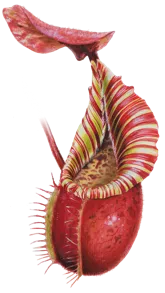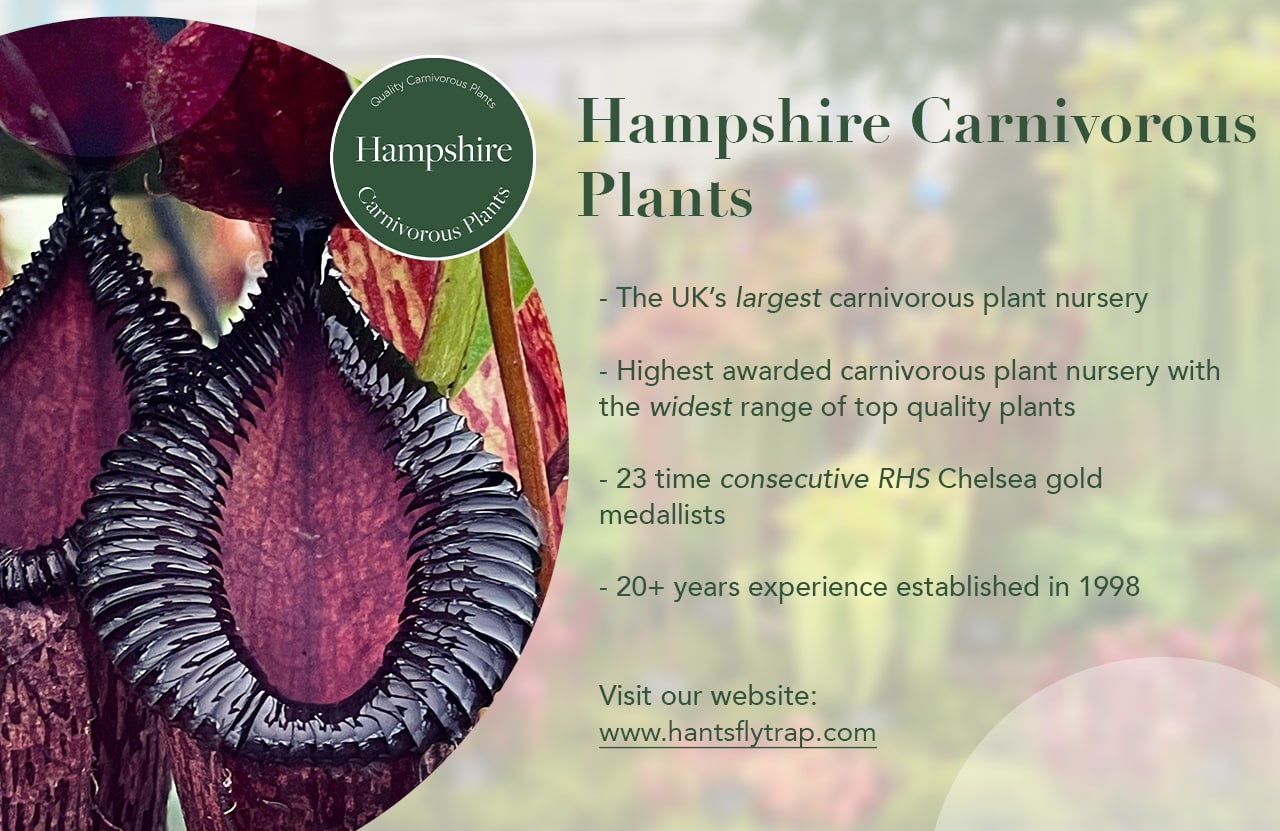Nepenthes attenboroughii
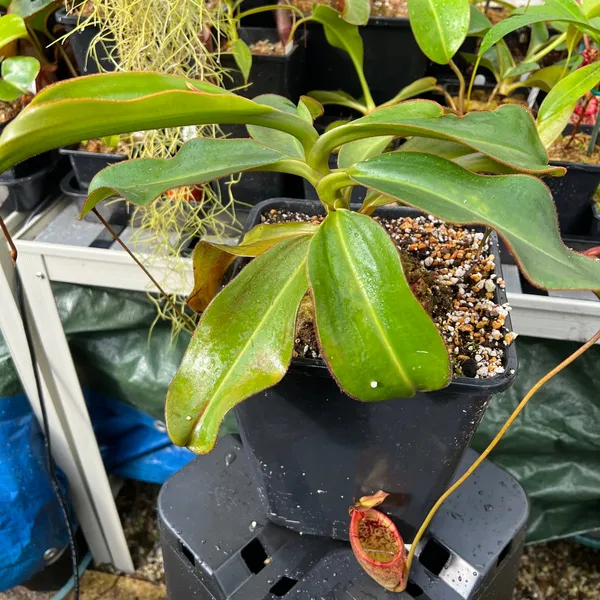 My largest seed-grown N. attenboroughii. I love the leaves on this species - note the brownish hairs along the leaf margins
My largest seed-grown N. attenboroughii. I love the leaves on this species - note the brownish hairs along the leaf margins 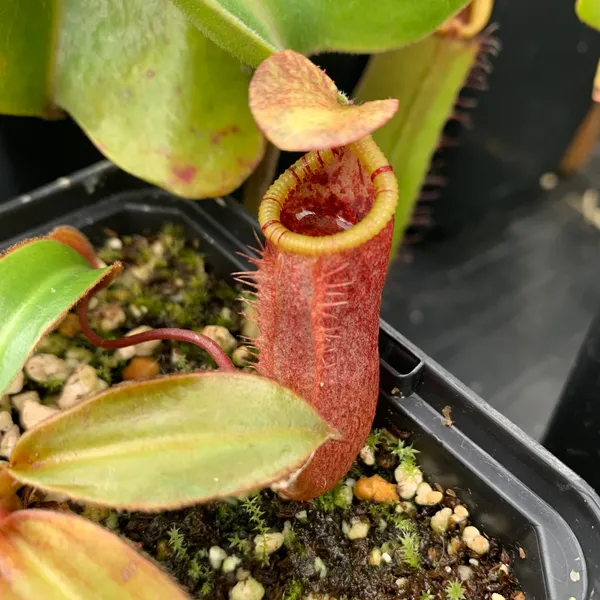 One of the few individuals I've managed to collect with a yellow peristome. Most of the N. attenboroughii I've encountered in cultivation have red or burgundy peristomes
One of the few individuals I've managed to collect with a yellow peristome. Most of the N. attenboroughii I've encountered in cultivation have red or burgundy peristomes 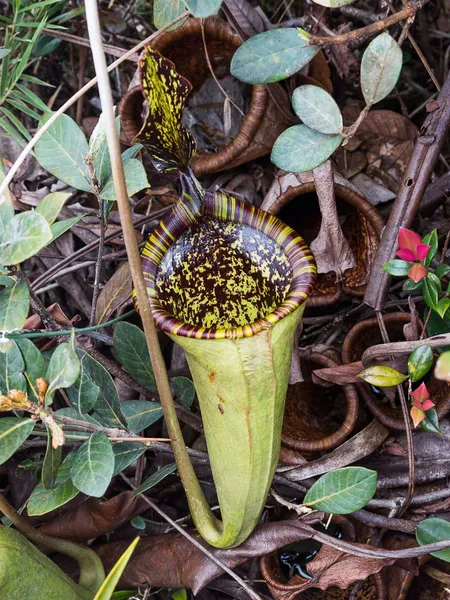 Pitcher in-situ on Mt Victoria, photographed by Laurent Taerwe
Pitcher in-situ on Mt Victoria, photographed by Laurent Taerwe 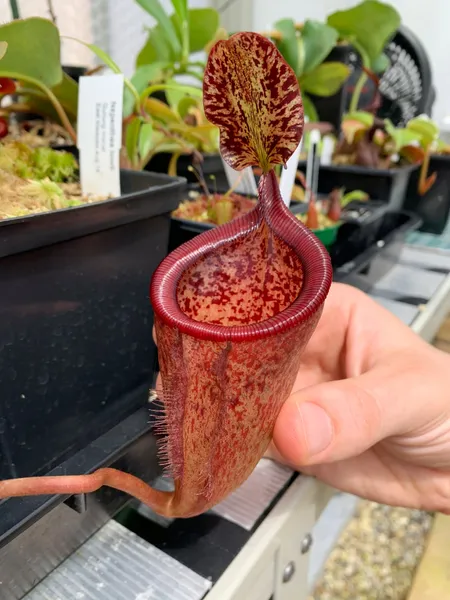 Pitcher on one of my red Nepenthes attenboroughii, grown from seed
Pitcher on one of my red Nepenthes attenboroughii, grown from seed 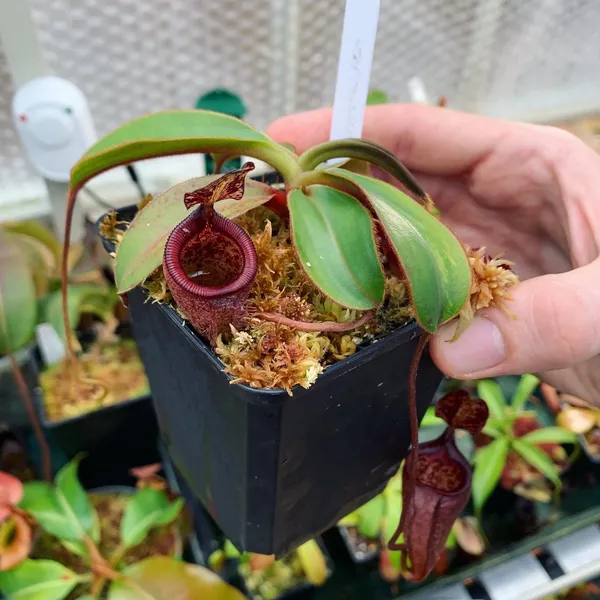 The same plant, but as a seedling, many years previously. N. attenboroughii can be quite slow
The same plant, but as a seedling, many years previously. N. attenboroughii can be quite slow 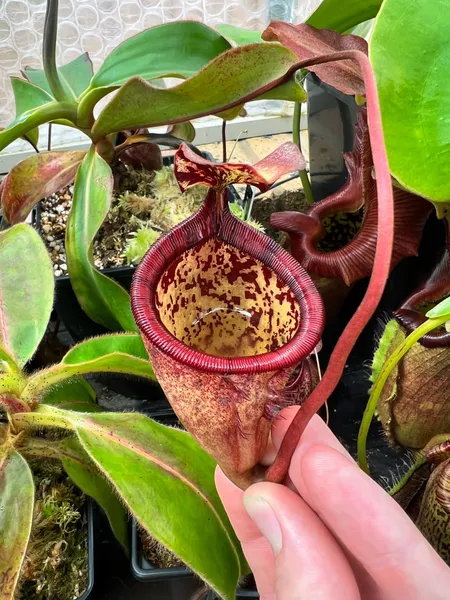 This one is stouter, with black striping on the peristome
This one is stouter, with black striping on the peristome Description & Care
Nepenthes attenboroughii is one of my favorite species of carnivorous plant. A relatively recent discovery, N. attenboroughii was first described in 2007 by a team of botanists led by Stewart McPherson. It grows only on the slopes of Mount Victoria, on the Philippine island of Palawan. The plant is named after the brilliant Sir David Attenborough, who is also a Nepenthes enthusiast - fans of his work will remember the many carnivorous plant segments in his documentaries.
The species is famous for its huge bell-shaped pitchers, which can grow up to 30cm tall and are among the largest in the whole Nepenthes genus. They vary in colour and shape, but their upright lids mean they are always held open to the elements and so often fill right to the brim with fluid. In the wild they’ve been documented to trap and digest small mammals such as shrews. Because of its desirability among collectors, and due to its very restricted distribution, N. attenboroughii is critically endangered in the wild. It faces the threat of extinction from poaching, and plants should only ever be sourced from reputable growers and nurseries. This is one of the reasons I aspire to produce species seed of N. attenboroughii in the future - I’m hoping I have a male and a female in my collection…
I’ve found Nepenthes attenboroughii’s reputation as a very slow grower to be somewhat exaggerated. They can be quite fussy about conditions, and some individuals are certainly slower than others, but once you’ve found a spot they like and given them time to establish, I’ve found they can grow at a steady pace. N. attenboroughii benefits from an ultramafic soil and a deep pot, lots of fertiliser or dead bugs in the pitchers, bright light, and decent airflow!
How I Grow It
| Media | Ultramafic substrate - peat, perlite, kanuma (1:1:1). |
| Water | Damp but not wet. |
| Light | Very bright, diffused light. |
| Fertiliser | Maxsea or liquid orchid feed in the pitchers, every two weeks. |
| Temperatures | 12°C (54°F) minimum year-round, with summer highs of ~ 30°C (86°F). |
| Humidity | 70% during the day, rising to over 90% at night. |
Learn more about cultivation with my guide to growing Nepenthes.
Day & Night Temperatures
Nepenthes attenboroughii is a highland species, found at elevations of between 1450 and 1726 meters. This range is highlighted in orange above, and equates to temperatures of approximately 23 - 28°C during the day, and 13 - 18°C at night.
Habitat
| Native to | Philippines |
| IUCN Red List status | Critically Endangered |
| Natural hybrids | None known |
Buying N. attenboroughii
| Availability | Hard to find, despite being in tissue culture by several nurseries. Slow growing. |
| Borneo Exotics codes |
|
| Recommended nursery | California Carnivores Hampshire Carnivorous Plants |
